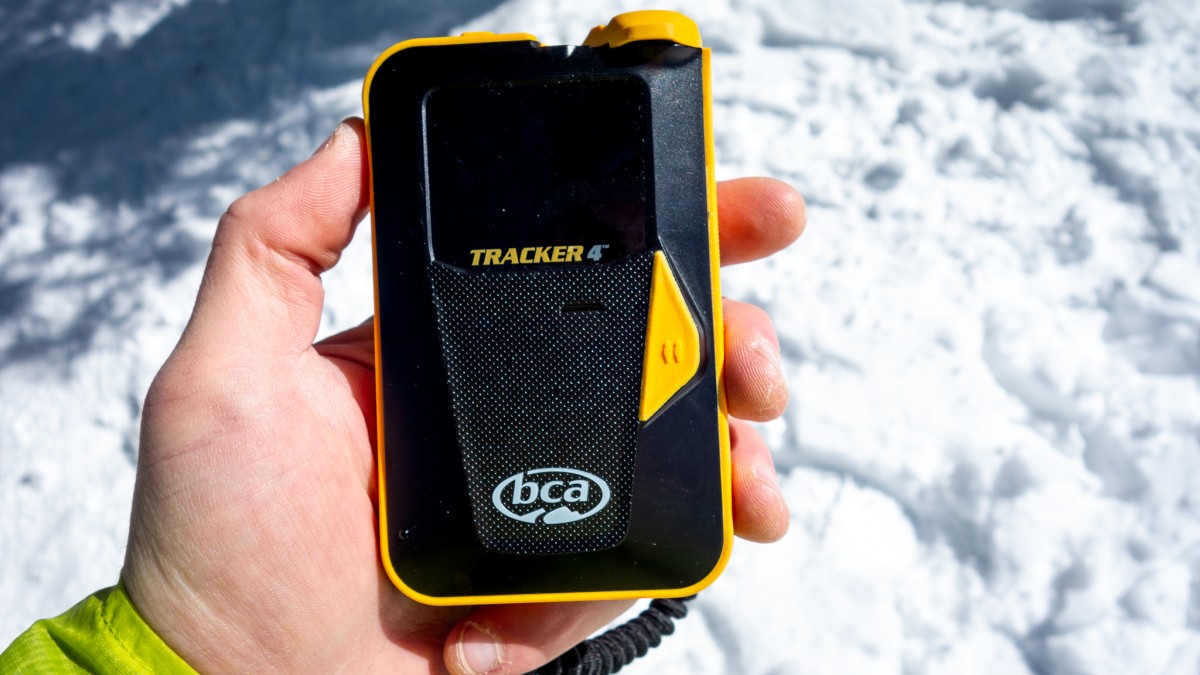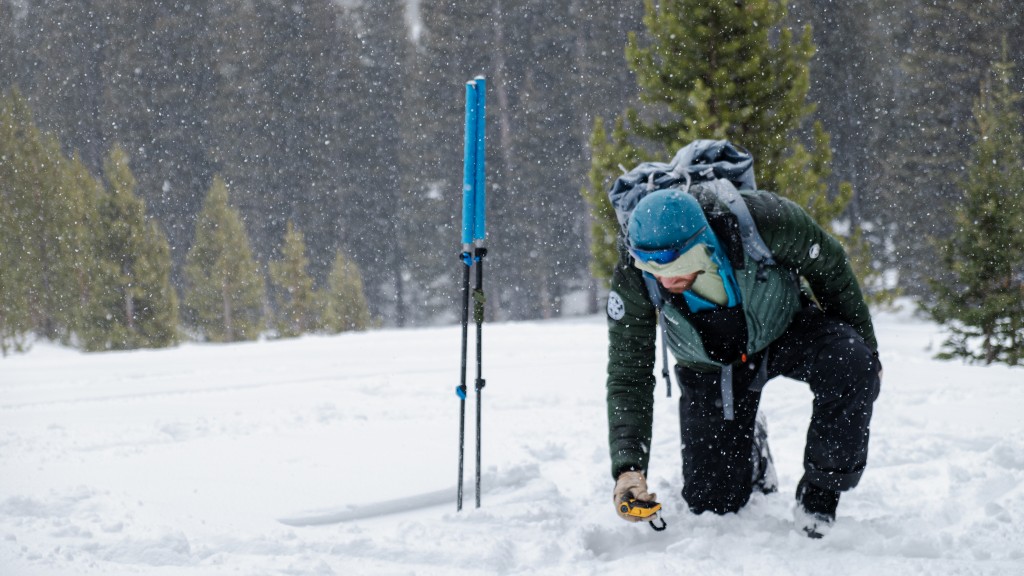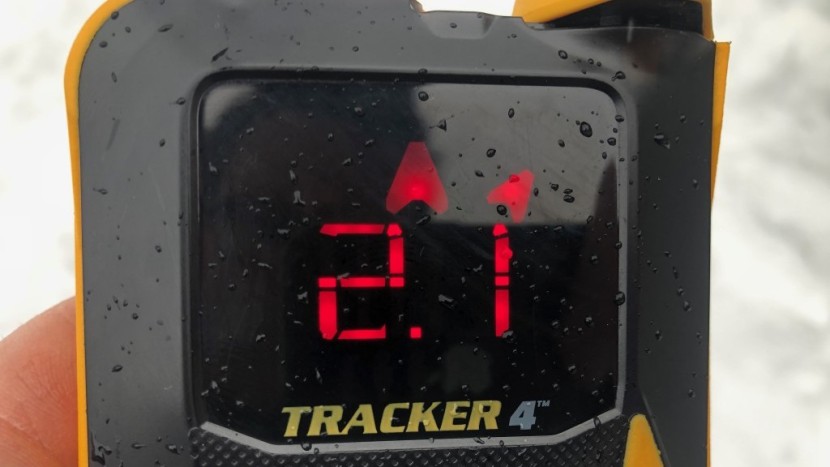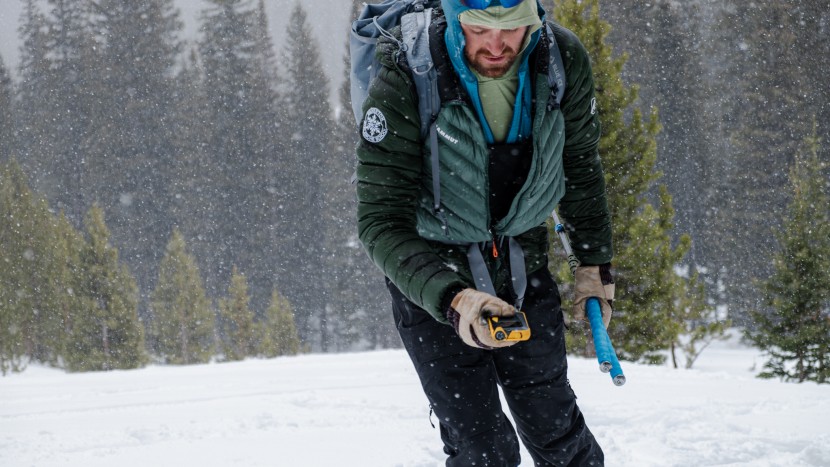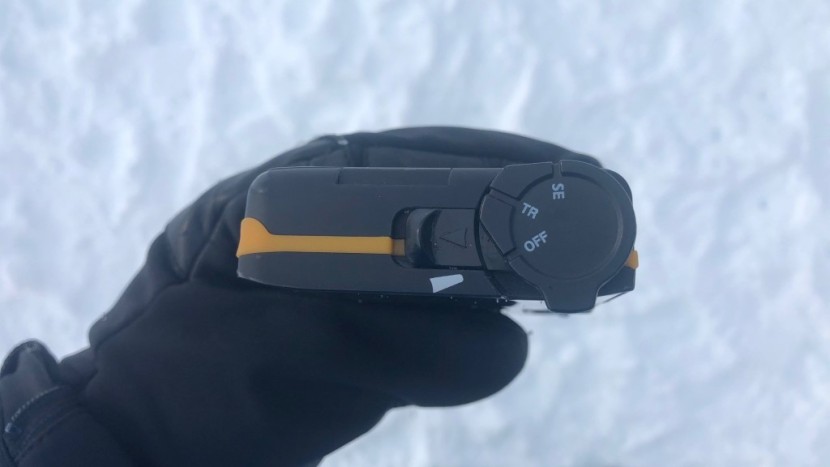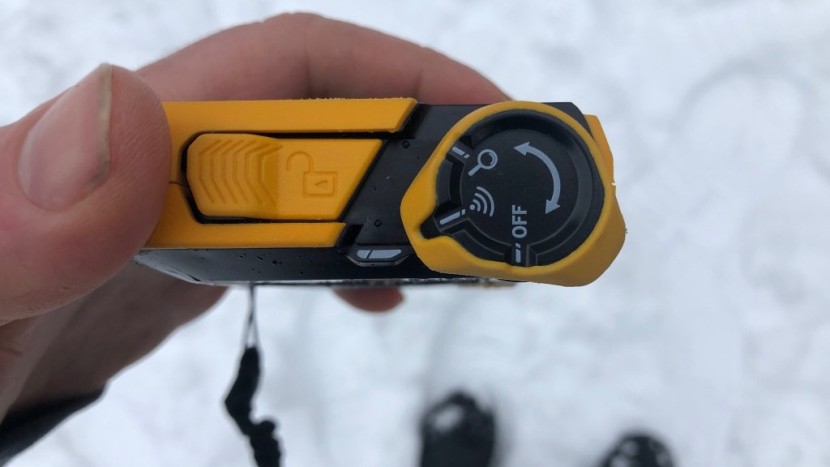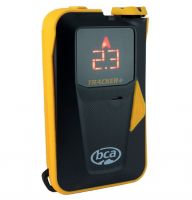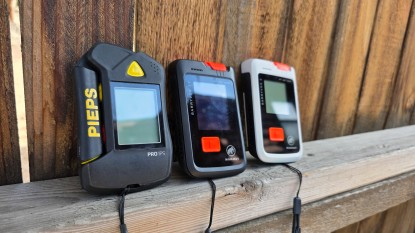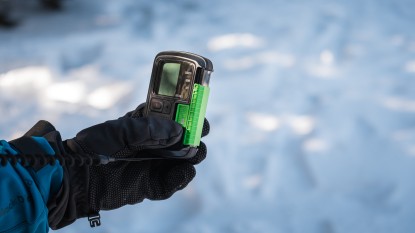
Our Verdict
Our Analysis and Test Results
The Backcountry Access Tracker4 is an intuitive, ultra-quick avalanche transceiver. In extensive side-by-side testing in the hands of both novices and pros, this beacon consistently produced some of the fastest search times for finding one or two burials. The Tracker4 sports one of the fastest processors on the market, which helps its user stay on the flux line. It was also among the most precise during the fine search phase, the search phase where many users struggle and where we find the most significant differences in accuracy between models.
Speed
The beacons in the BCA Tracker family are some of the fastest on the market, and the Tracker4 is no exception. In our testing, it consistently provided some of the fastest rescue times thanks to its lightning-fast processing speed and instant-read feedback – rather than a delayed reading, the numbers adjust as you move so that you can make quick adjustments on the fly.
Simplicity is speed is the design philosophy behind BCA's Tracker series. Sure, some more advanced beacons in our lineup have more features. But the more straightforward Tracker4 still has the main features most users want, while consistently providing the fastest rescue times for one- to two-person burials. We'll leave it up to you to decide which is more important.
Interface
The Tracker4 is straightforward to use, and even among entirely novice users, it doesn't take very long to figure out. This beacon can be used right out of the box with little to no setup. Although it has a limited feature set compared to other models we tested, it excels at single burial searches.
Our main complaint with this beacon – and all BCA beacons, for that matter – is that the Tracker4 doesn't use the colloquial “send” and “search” phrases for their on-off switch. Instead of “send”, which is what it's most often called, BCA opts for the more proper term, “transmit”. Although it shouldn't, in our experience teaching avalanche courses, this labeling has caused a lot of confusion among new users.
Notable Features
The Tracker4 offers an Auto-Revert function, which is designed as a backup in case you are hit by a secondary avalanche while conducting a search. If the internal motion sensor hasn't logged any movement for one minute, it will auto-revert to transmit. After five minutes in search mode, even if you're in motion, the Tracker4 is set to Auto-Revert, which is a bit annoying and arguably catastrophic if you're working a complex burial and don't notice that your beacon has automatically turned back to transmit. Fortunately, a loud warning tone sounds 30 seconds before the auto-revert occurs and can be deactivated by pressing a single button. If you want to use this feature, you also must activate it every time you power up your beacon.
Accuracy
The Tracker4 is incredibly accurate in both fine and coarse search phases. Its uber-fast processor delivers real-time data to keep you on track throughout a search. In the coarse search phase, the accuracy of the direction arrows efficiently guided us to the target. However, others who tested this beacon also noted that the arrows are jumpy compared to other models. This is likely due to the speed at which this beacon updates, but we admit that it can sometimes make the direction arrows a bit harder to follow.
Once we got down to the fine search phase, we were consistently within 25 cm of a probe strike on a target buried up to 1 meter deep. While we attribute part of the success rate to a properly executed bracket, most of the beacons we tested displayed this level of accuracy and it was only notable if one did not.
Multiple Burials
This is where the performance of the Tracker4 varies a bit depending on the complexity of the rescue and the number of signals being transmitted. The Tracker4 will display up to two individual “person” icons. But with any more than two, it will simply display a “+” sign next to the two icons. If two beacons are buried less than six meters apart, brackets will appear around both of the people symbols.
Like all recent Tracker models, the Tracker4 features a Signal Suppression mode instead of a true marking feature. This will suppress the closest signal for up to 60 seconds and can be incredibly helpful if you're searching for only two buried victims. Signal Suppression can be used quite effectively with the accompanying Big Picture mode. This mode quickly bounces between signals, providing the distance and direction of every beacon within its range, which helps a rescuer quickly size up the scene. But compared to other beacons that include a marking or flagging feature, these functions are notably less intuitive and take much more practice to efficiently find more than two targets.
Along with the rest of the Tracker family, the Tracker4 also has the least amount of signal lock of the beacons we tested. This has various pros and cons, but a huge plus is the Tracker4 is a microstrip searching champion. Microstrip searching is a special technique used primarily when multiple people are buried so close together that a marking function is not viable because you might end up unintentionally marking two beacons at once. In this case, because the Tracker4 is able to accurately bounce back and forth between signals, you can better solve this complex problem.
Range
BCA claims that the Tracker4 has a maximum range of 55 m but recommends a search strip width of 50 m. Even though this is true for beacons under conditions of “ideal coupling” — where their antennas are perfectly aligned — it is not entirely realistic to a real-world rescue. To get a better idea of realistic range, we measured the distances where a beacon picked up a consistent signal and then averaged those numbers across our tests. The Tracker4 has an average range of 42 meters, which is average across the industry.
Should You Buy the BCA Tracker4?
The Tracker4 builds upon the legacy of BCA's line of Tracker avalanche transceivers. Compared to the bulk of the beacons on the market, the Tracker4's speed and ease of use are virtually unmatched. Whether in the hands of a novice or a pro, during our single victim searches, few beacons could consistently match the times set by the Tracker4. For aspiring professionals training for exams with more complex burial situations, the Tracker4 likely requires a bit more practice. But, speaking from the experience of a few of our testers who passed their exams using a Tracker, it is easily achievable.
Tracker4 vs. Tracker3
The differences between the new Tracker4 and Tracker3 are actually pretty small. They have nearly all the same functionality and features as one another, and most of the differences are in the beacons' exteriors and in their displays. The Tracker4 features a rubber over-mold for added durability and an easier grip. Its display is also brighter, its audible tones are louder than the Tracker3, and the USB port is on the outside instead of inside the battery compartment. However, the two beacons appear to have the same processors and share the same multiple burial functions.
What Other Avalanche Beacon Should You Consider?
While we love the Tracker4, it isn't our first choice for professionals working in the avalanche industry. If you're a guide, ski patroller, or any other type of working professional, we suggest either the Mammut Barryvox S2 or the comparable Pieps Pro IPS. The other BCA Tracker models are also worthy of your consideration, but we particularly appreciate the BCA Tracker S for its balance of value and overall performance.
| Awards | |
|---|---|
| Price | $400 List Check Amazon (on sale!) |
Overall Score  |
|
| Star Rating | |
| Bottom Line | One of the fastest, most intuitive, and easiest to use beacons on the market |
| Pros | Intuitive to use, very fast processor, excels at fine search, comfortable to wear in a zippered pocket |
| Cons | Takes more practice for proficiency at multiple burials, signal suppression clears after 60 seconds |
| Rating Categories | Backcountry Access T... |
| Speed (30%) | |
| Interface (25%) | |
| Accuracy (20%) | |
| Multiple Burials (15%) | |
| Range (10%) | |
| Specifications | Backcountry Access T... |
| Manufacturer's Stated Max Range | 55 m |
| Measured Range | 42 m |
| Flagging Feature | No (Signal Suppression) |
| Digital or Analog Modes | Digital |
| Stated Battery Life (in "Send") | 250 hours |
| Number of Antennae | 3 |
| Measured Weight | 215 g |


